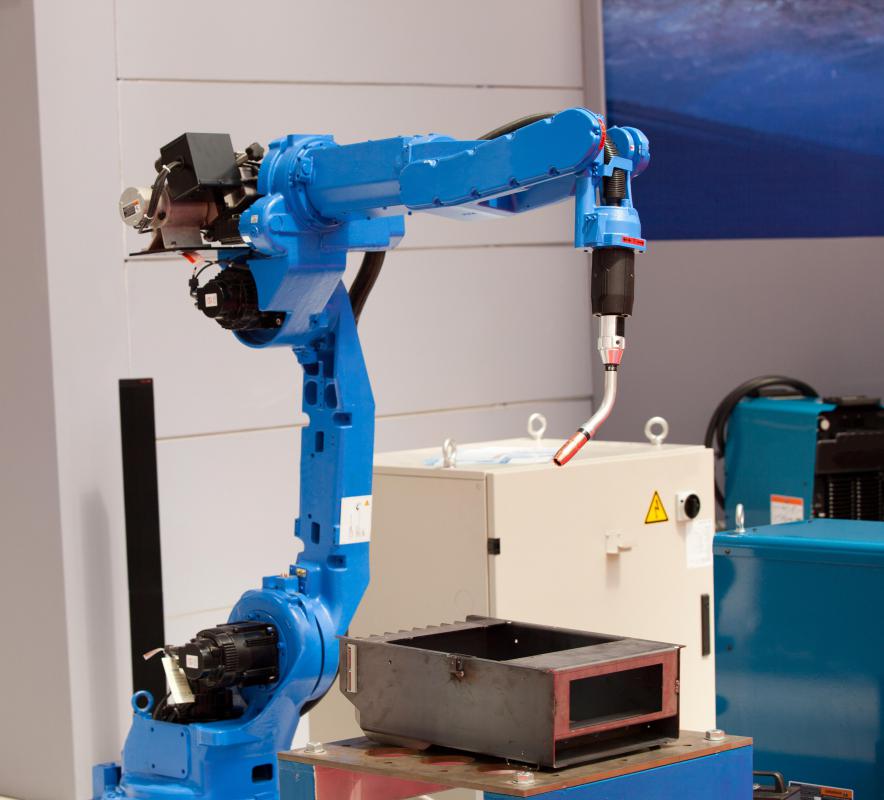At HomeQuestionsAnswered, we're committed to delivering accurate, trustworthy information. Our expert-authored content is rigorously fact-checked and sourced from credible authorities. Discover how we uphold the highest standards in providing you with reliable knowledge.
What is a Limit Switch?
A limit switch is a device used in conjunction with electrical circuits and small machines that essentially acts to switch off or limit certain electrical currents. In most cases these are actual switches that can be flipped either open or closed, though that “flipping” is usually done automatically in response to certain stimulation. The switches are sometimes visible but are often also part of the internal workings of a larger device or machine, which means that they aren’t always immediately recognized by people who don’t know to look for them. They can be either mechanical or centrifugal, which means that they can be triggered either by some specific action or some specific speed; both are used in a variety of appliances both at home and in industry.
Basic Concept

These switches help control mechanical movement so that the machines in which they are installed will be able to work as efficiently and as effectively as possible. Getting power to something is usually pretty easy, but it can be harder to cut it off at the right time — and that’s where these devices come in.
When a circuit is “closed,” it allows the flow of electrical current through the switch to pass to the device being powered. When the switch is “open,” the switch is disengaged and no electrical power will pass through it. Whether the switch is open or closed is generally determined either by the position of a device being powered or by a set amount of time a device requires to complete a specific task.
Mechanical Examples
Most limit switches are mechanical in nature, which means that they work according to a series of electrical impulses and currents the same as most any small machine would. This sort of switch tracks the location of a specific item and opens or closes when that item reaches a specific location. The switch is activated by physical contact, or lack thereof. For example, a light inside a car often turns on when one of the doors is opened. The internal switch that controls that is alternatively cutting off and supplying electricity as needed in response to physical stimulation in the door jamb.
Centrifugal Switches
Centrifugal switches work a bit differently. These gauge and are activated strictly by the speed of the item being monitored. While a centrifugal switch can have many purposes, it is widely used as a safety mechanism to shut down a device if it reaches a speed higher or lower than its accepted safety rating. These switches are commonly used in engines and motors of small devices and appliances.
Uses in Industry
It’s often easiest to see limit switches in action in industrial settings. They are used for everything from controlling a hoist motor to providing pressure control to ensuring worker safety. Switches can be used to start, stop or reverse assembly lines; as sensors to detect a completed activity, such as stopping a robotic arm from stacking materials past a certain height; or as detectors to engage such safety equipment as fire doors in the event of an emergency. Usage examples are endless, and the examples are varied in both size and visibility. They are almost ubiquitous, though, even if they aren’t immediately noticed.
At Home and in Society
Household environments make use of these devices as well. A standard garage door opener is a good example. The opener has two limit switches: one to control how long electrical power is supplied to the motor powering the opener, and one to control the travel time of the door as it moves up or down. When the door reaches a certain point the switches open, thus stopping the door from hitting the motor at the top or crashing into the ground at the bottom. Many small appliances also have them. They can shut off a toaster oven or microwave when the set time has elapsed, for instance, or can trigger an end to a washing machine’s spin cycle. Switches are used in stores and public buildings just as frequently.
AS FEATURED ON:
AS FEATURED ON:











Discuss this Article
Post your comments